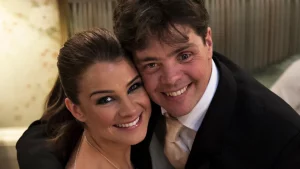
The role of the hands (mouth and family) in recovering from showing no signs of brain activity.
Rupert Johnston had been in a coma for two months after a horrific car crash in February 1997 and was showing no signs of brain activity.
Doctors advised turning off the 18-year-old musician’s life support machine. But his father brought his son’s beloved French horn to his bedside. Rupert, who grew up in Harpenden, Hertfordshire, began slowly moving his fingers along the valves in time to a Mozart recording.
“That was our first moment of hope that there was something there,” recalls his younger sister, violinist Izzy Judd, who was 12 at the time.
Rupert’s skull needed to be rebuilt. He had 13 hours of brain surgery, where they removed his front left lobe, with his right lobe left in place but permanently damaged.
“The muscles around his lips, which he used to play the horn, were the only part of his face that wasn’t severely damaged,” Izzy says.
Rupert was studying at the Guildhall School of Music at the time of the accident, having left home at the age of eight to become a chorister at King’s College, Cambridge.
He and Izzy, and their two brothers, grew up surrounded by music. Their parents ran a music school in Hertfordshire.
“Rupert was an exceptionally gifted musician and he was so charismatic, full of life and vibrant,” Izzy recalls.
“His ambition was to be a professional horn musician and I have no doubt he would have achieved that.”On [Izzy’s] wedding day [to Harry Judd], Rupert performed a horn solo from John Williams’s Somewhere in My Memory, which features in the film Home Alone.
“People were in awe. It takes your breath away when Rupert performs. I felt unbelievably proud, but also sad because he was on the path to such a huge career and he’s not likely to have his own wedding day.”
0 Comments